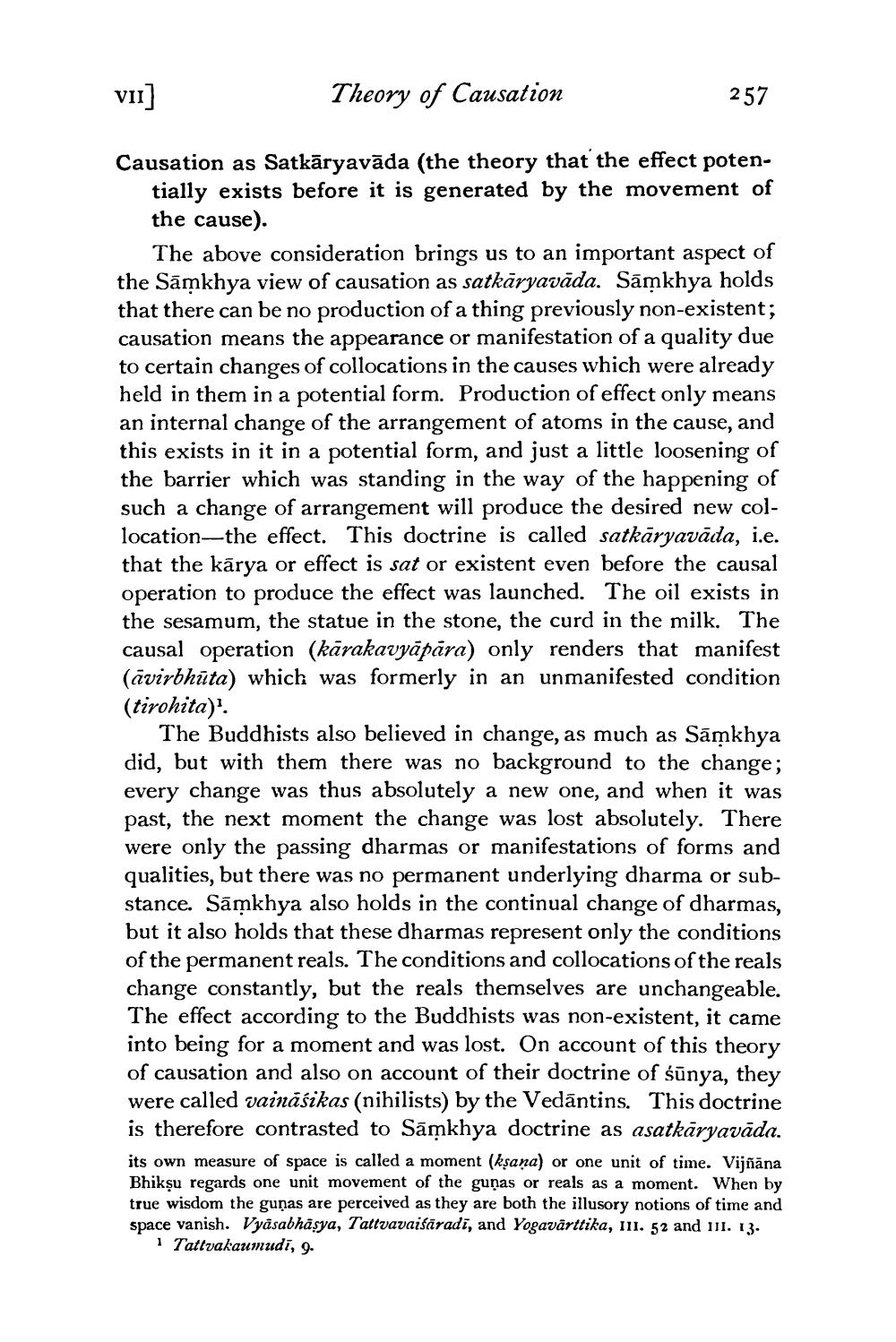________________
vii]
Theory of Causation
257
Causation as Satkāryavāda (the theory that the effect poten
tially exists before it is generated by the movement of the cause).
The above consideration brings us to an important aspect of the Sāmkhya view of causation as satkāryavāda. Sāmkhya holds that there can be no production of a thing previously non-existent; causation means the appearance or manifestation of a quality due to certain changes of collocations in the causes which were already held in them in a potential form. Production of effect only means an internal change of the arrangement of atoms in the cause, and this exists in it in a potential form, and just a little loosening of the barrier which was standing in the way of the happening of such a change of arrangement will produce the desired new collocation-the effect. This doctrine is called satkāryavāda, i.e. that the kārya or effect is sat or existent even before the causal operation to produce the effect was launched. The oil exists in the sesamum, the statue in the stone, the curd in the milk. The causal operation (kārakavyāpāra) only renders that manifest (āvirbhūta) which was formerly in an unmanifested condition (tirohita)
The Buddhists also believed in change, as much as Sāmkhya did, but with them there was no background to the change; every change was thus absolutely a new one, and when it was past, the next moment the change was lost absolutely. There were only the passing dharmas or manifestations of forms and qualities, but there was no permanent underlying dharma or substance. Samkhya also holds in the continual change of dharmas, but it also holds that these dharmas represent only the conditions of the permanent reals. The conditions and collocations of the reals change constantly, but the reals themselves are unchangeable. The effect according to the Buddhists was non-existent, it came into being for a moment and was lost. On account of this theory of causation and also on account of their doctrine of śūnya, they were called vaināśikas (nihilists) by the Vedāntins. This doctrine is therefore contrasted to Sāmkhya doctrine as asatkāryavāda. its own measure of space is called a moment (ksana) or one unit of time. Vijñāna Bhikṣu regards one unit movement of the guņas or reals as a moment. When by true wisdom the guņas are perceived as they are both the illusory notions of time and space vanish. Vyasabhâsya, Tattvavaisāradi, and Yogavärttika, III. 52 and u. 13
1 Tattvakaumudi, 9.




